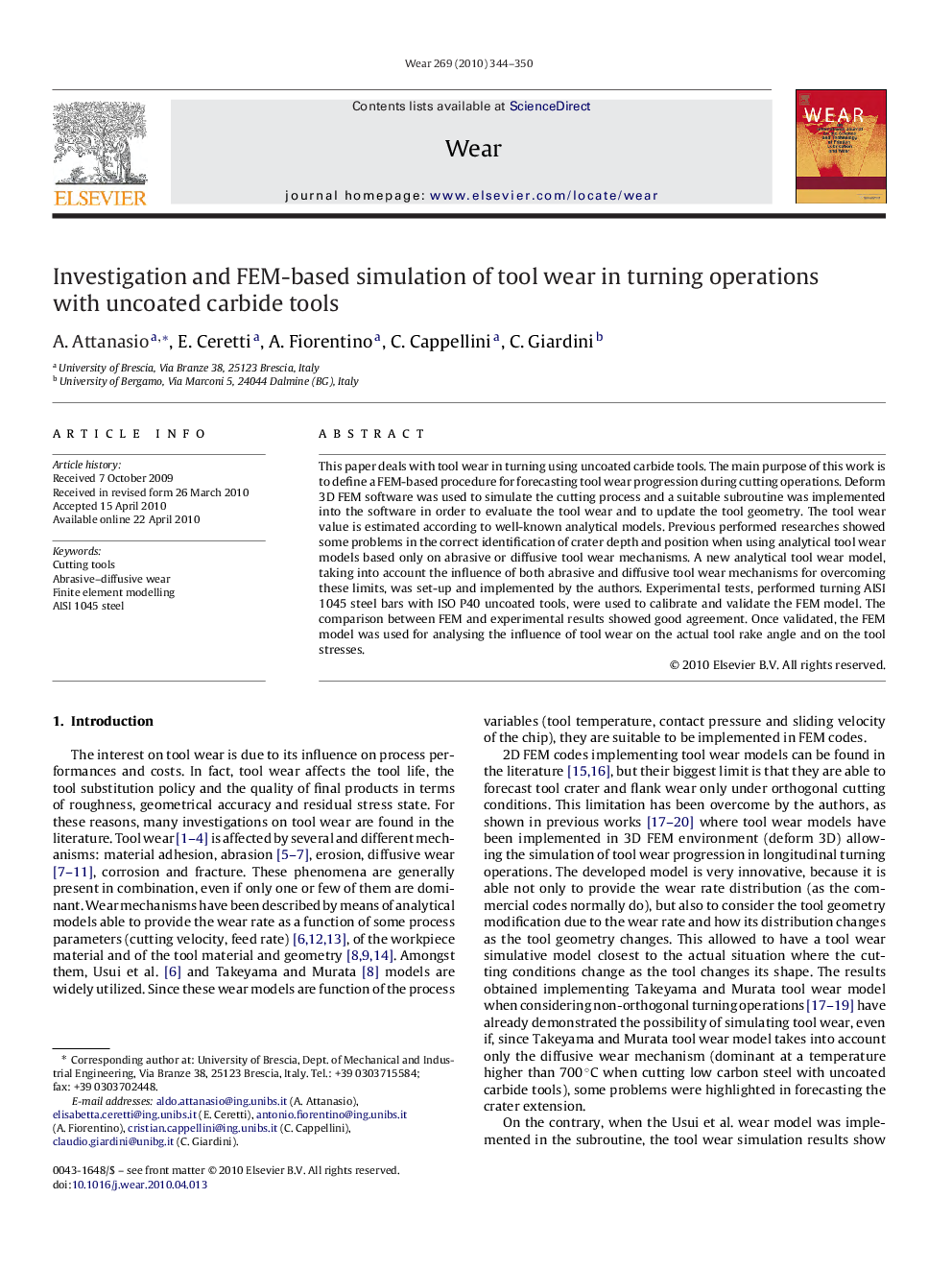| Article ID | Journal | Published Year | Pages | File Type |
|---|---|---|---|---|
| 618789 | Wear | 2010 | 7 Pages |
This paper deals with tool wear in turning using uncoated carbide tools. The main purpose of this work is to define a FEM-based procedure for forecasting tool wear progression during cutting operations. Deform 3D FEM software was used to simulate the cutting process and a suitable subroutine was implemented into the software in order to evaluate the tool wear and to update the tool geometry. The tool wear value is estimated according to well-known analytical models. Previous performed researches showed some problems in the correct identification of crater depth and position when using analytical tool wear models based only on abrasive or diffusive tool wear mechanisms. A new analytical tool wear model, taking into account the influence of both abrasive and diffusive tool wear mechanisms for overcoming these limits, was set-up and implemented by the authors. Experimental tests, performed turning AISI 1045 steel bars with ISO P40 uncoated tools, were used to calibrate and validate the FEM model. The comparison between FEM and experimental results showed good agreement. Once validated, the FEM model was used for analysing the influence of tool wear on the actual tool rake angle and on the tool stresses.
